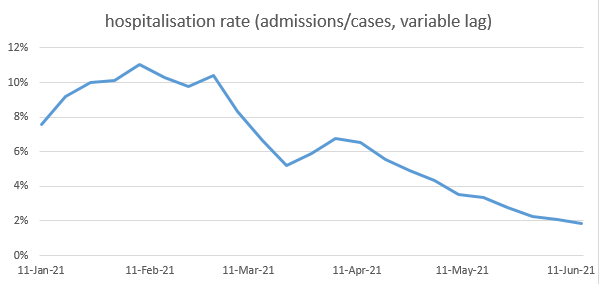
I’m honestly not liking this case data much at all. While the modeller in me is happy that the growth rates in different age groups are, for once, moving consistently in the same direction, I just wish that direction wasn’t up. 1/6 

Looking in a bit more detail, we can see growth continuing to accelerate in school-age children (5-14s)… 2/6 

And the young adults (15-29) are starting to accelerate (gently) again, after a period of consistent growth 3/6 

The only saving grace is that there’s not much change yet in the 80-somethings, and the 90+ (which is volatile due to low case numbers) are on a downward swing. Let's hope that continues - but given the patterns in the other age groups, I'm not confident that it will. 6/6 

• • •
Missing some Tweet in this thread? You can try to
force a refresh













